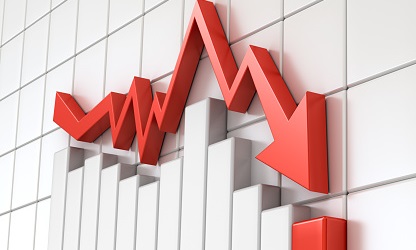The key theme this week for global markets, and especially in US markets, was inflation. Markets started the week on a risk off footing amid a surge in industrial metal and raw material prices, as well as a surge in US break-even inflation expectations. If inflation comes back too fast, major global central banks might have to remove the “punchbowl” of ultra-accommodative monetary policy that has kept global equity markets (particularly in the US) so well supported in recent years, or so the fear goes. These fears were heightened even further on Wednesday, in wake of a much hotter than expected US CPI report for the month of April. Prices were up 4.2% on the year, higher than expectations for a 3.6% rise, and 0.8% on the month, well above expectations for a 0.2% MoM rise. Base effects (i.e. weakness in prices this time last year due to the first wave of Covid-19 lockdowns) explain a large part of the jump in the YoY rate of inflation, while a surge in prices of sectors of the economy most likely to benefit from stimulus cheques and reopening (car parts, hospitality etc.) made up a lot of the surge in the MoM rate of inflation. But still, inflation pressures are clearly building, hence why on Wednesday, global risk assets took an even further dive.
Members of the US Federal Reserve spoke out to cool inflation fears on Wednesday and Thursday; saying that the data is likely to be volatile in the coming months and that they expect the spike in inflation to be transitory. Inflation expectations remain well anchored, Fed officials have argued this week. This has allowed risk assets (i.e. global equities to recovery in the final two days of the week. Indeed, reassurance from the Fed meant that markets did not panic in the same way on Thursday when the latest US Producer Price Inflation report showed prices up a stunning 6.2% on the year as they did in response to CPI on Wednesday. Similarly, markets have not reacted to data out this morning from the University of Michigan showing that consumer inflation expectations have shot higher in May; 1-year inflation expectations jumped to 4.6% from 3.4% in April, whilst 5-year expectations jumped to 3.1% from 2.7% in April.
Inflation fears going forward and what they might mean for markets…
Markets are clearly more fearful of inflation than the Fed. Indeed, whilst the Fed continues to seemingly stick to its pledge to hold interest rate at just above zero through its forecast horizon (i.e. into 2024), money markets are now pricing at least one rate hike by the end of 2022. This may reflect a view amongst market participants that the Fed is under-estimating inflation risks over the next 18 months. That is a view expressed by a number of research houses, anyway; that inflation is set to remain persistently higher for longer than the Fed thinks, amid a combination of 1) a strong economic rebound, 2) persistent supply side disruptions (i.e. the global chip shortage), 3) record high commodity prices and 4) a perhaps tighter than anticipated labour market – this week’s JOLTS Jobs Openings rose to an all-time high despite the high unemployment rate, showing that many people are choosing not to work still (perhaps due to excessively generous benefits, fear of the virus or child-care requirements).
Who is going to be right about inflation, the Fed or markets? Of course, it remains still far to early to answer that question. Answering that question is not helped by the fact that no one is quite sure what the Fed’s definition of “transitory” is. Indeed, the Fed probably is not even sure, and is maintaining strategic ambiguity so as to give itself greater flexibility down the line. But some Fed members have talked about needing to see the next four- or five-months’ worth of inflation data before making a judgement on whether inflationary pressures are turning out to be more than transitory or not. In other words, we might not know for a few months yet whether the spike in inflation is going to be temporary as the Fed predicts, or stickier as most market participants seem to believe.
In terms of how markets will react as this inflation story unfolds; with all of the most important inflation data out of the way for a few weeks, market focus is likely to return to the bullish narrative of strong economic growth and a still very much dovish Fed. Likely, this will be supportive for risk assets such as global equities and commodities and may result in higher US yields, which could help the dollar (though any risk on environment would be a bit of a weight on the buck). Then, this time next month, the May inflation numbers will be coming out again and we could be in for a repeat of this week (i.e. some inflation nerves being triggered) depending on how strong the inflation reports were.
Looking at the inflation theme over a longer time horizon; if inflation does begin to cool off in Q3 or Q4 of this year (i.e. the YoY rate of CPI drops back to 2.0% or below), then this will vindicate the Fed’s approach, as well as their forecast for rates to remain at zero until at least 2024. Risk assets tend to love “lower for longer” when it comes to Fed interest rate, and thus this would be expected to support stock, bond and commodity valuations, whilst hurting the US dollar. Meanwhile, if money market expectations for Fed rate hikes in 2022 prove correct, whilst this will not be the best outcome for global risk assets, it might not be as catastrophic as what some market participants fear, given that it is what is already priced in/expected. The worst outcome for markets, i.e. an outcome that would send stocks, bonds and commodities lower and the US dollar higher, is if markets start bringing their expectations for Fed rate hikes even further forward, something which could perhaps be triggered by inflation remains at elevated levels (above the Fed’s 2.0% target) into the start of 2022 and perhaps beyond.




